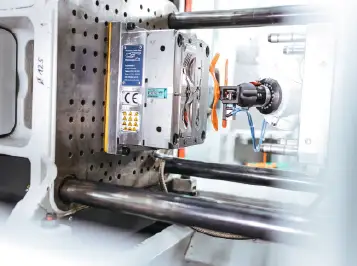Hydraulic directional and proportional valves are vital in the injection molding industry for controlling hydraulic fluid flow, pressure, and direction, which ensures precision and efficiency in the molding process. Here’s how they are used:
Hydraulic Directional Valves:
- Control Mold Clamping: These valves regulate the movement of hydraulic cylinders that open and close the mold, ensuring proper clamping force is applied.
- Injection Process: They control the flow of hydraulic fluid to the injection unit, driving the screw or plunger to inject molten plastic into the mold.
- Ejector System: Directional valves manage the operation of ejector pins or plates, which remove the finished product from the mold.
- Cooling Systems: They direct hydraulic flow to auxiliary systems, such as water or oil cooling units, which regulate mold temperatures.
Hydraulic Proportional Valves:
- Precise Flow and Pressure Control: These valves allow fine-tuned control of hydraulic flow and pressure, critical for ensuring uniform injection speed and pressure.
- Clamping Force Adjustment: Proportional valves enable smooth adjustments to the clamping force, preventing mold damage and ensuring product quality.
- Screw Recovery: They regulate the rotation and backpressure on the screw during the recovery phase, ensuring consistent material preparation.
- Cycle Time Optimization: By offering smooth transitions and precise control, proportional valves minimize cycle times while maintaining high accuracy.
- Multi-stage Injection: These valves enable complex injection profiles, such as multi-speed or pressure phases, to mold intricate and high-quality products.
Together, these valves improve the precision, efficiency, and reliability of hydraulic systems in injection molding machines, ensuring high-quality production and reduced downtime.
In the injection molding industry, hydraulic directional and proportional valves are critical components of the hydraulic system, which powers and controls the molding machine. Here’s a deeper dive into their usage and applications.
Directional valves are used to start, stop, and direct the flow of hydraulic fluid within the system. They play a fundamental role in ensuring the machine operates in the correct sequence:
- Mold Clamping and Opening: The clamping unit uses directional valves to apply force through hydraulic cylinders, securely closing the mold and opening it once the product is formed. Proper control ensures safety and prevents mold damage.
- Injection Unit Movement: The injection unit is moved into position by hydraulic actuators controlled by these valves, ensuring precise alignment before injecting molten plastic.
- Ejector System Operation: Directional valves operate ejector cylinders to push the molded part out of the mold cavity with consistent force and speed.
- Auxiliary Systems Control: These valves also support ancillary functions like moving robotic arms for part handling or actuating core pull systems for complex molds.
Proportional valves provide the fine control needed for high-precision processes, offering variable adjustments based on electronic signals:
- Precise Pressure and Speed Control: Proportional valves adjust the pressure and flow rate dynamically, ensuring smooth injection speeds and pressures that adapt to the requirements of each product.
- Multi-phase Injection Control: Many products require variable injection speeds and pressures. Proportional valves allow the machine to transition smoothly between different phases of the injection process, such as high-speed filling and low-speed packing.
- Consistent Material Delivery: During screw recovery, proportional valves control the backpressure and rotation speed of the screw, ensuring consistent plasticizing of the material.
- Energy Efficiency: By adjusting hydraulic flow only as needed, proportional valves help reduce energy consumption and minimize heat generation, which is particularly important for long production runs.
- Dynamic Clamping Adjustments: These valves allow real-time adjustment of clamping force to compensate for material shrinkage or thermal expansion during cooling.
Combined Benefits in Injection Molding:
- Improved Product Quality: The precision offered by proportional valves ensures consistent part dimensions, better surface finish, and reduced defects.
- Reduced Wear and Tear: Smooth control reduces stress on mechanical components, extending the machine’s lifespan.
- Enhanced Efficiency: Both valve types contribute to faster cycle times by optimizing the sequence and dynamics of the molding process.
- Adaptability: Modern injection molding often involves producing complex or multi-material parts. The flexibility of hydraulic systems controlled by these valves supports advanced molding techniques like gas-assisted injection or co-injection.
By working together, hydraulic directional and proportional valves provide the robust and precise control needed for high-performance injection molding machines, enabling them to meet the demands of modern manufacturing.

